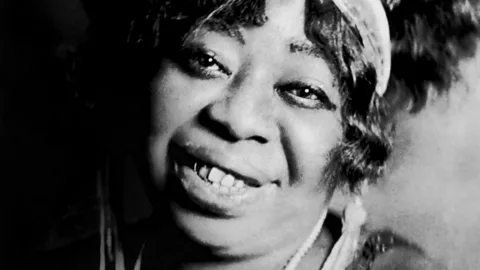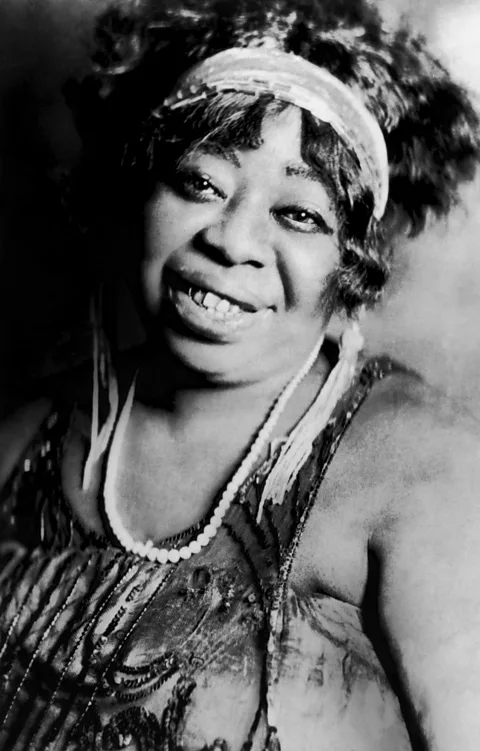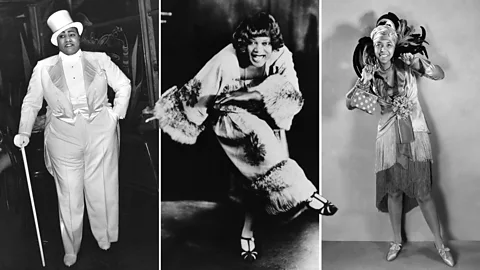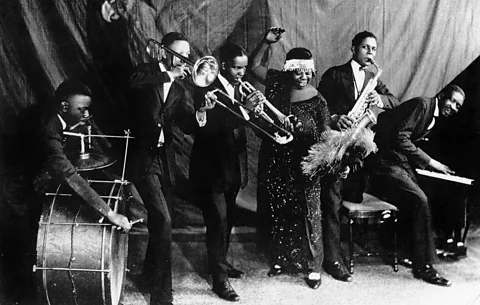
The 1928 song that’s one of the world’s first gay anthems
- Culture
- June 26, 2025
 Getty images
Getty imagesCited as one of the first representations of the Popular Black Culture Queer, sensational, by Ma Rainey, the blues is a historical song that had a deep and lasting effect.
One night in 1925, the police broke a party in a Chicago apartment. Such raids were common in the era of clandestine bars and prohibition, but this was different: all Juerguistas were women and were in a state of nudity.
The singer Ma Rainey, the host of the party, known as the “mother of the blues”, was arrested. But far from silence the incident and the exit of his sexual interest in women, he made a history about it, shows that in me blues, launched in 1928.
“They say that I do it, no one caught me
Surely I have to try it;
He left last night with a multitude of my friends,
They must have leg women, “because I don’t like men …”
With his statement out of place in the second new, “I want everyone to know”, this proclamation without complexes of being what was later labeled as “a lady lover” is one of the world’s first gay hymns in the world. Proble on Me Blues was “one of the first representations of the Popular Black Queer culture”, Dr. Cookie Woolner, associate professor of history at Memphis University and author of the famous Lady Lady Ladovers: Black Women and queer Desire Stonewall. “I imagine that the song resonated and validated the experiences of many black women who loved women at this time,” he adds.
Born Gertrude Pridgett in 1886, this female empowerment icon actually owes the artistic name to her husband, “pa” (William) Rainey, a comedian, singer and dancer with whom she performed a double diet act in 1916. Vazevil style of her first performances with the rhythms with soul or southern blues. In 1923, she was signed by Paramount Records and made more than 100 recordings for them, including her best known song Ma Rainey’s Black Bottom (1927), which took her name from a dancing coined by Charleston (1984) and film and film.
 Getty images
Getty imagesRainey and his serious voice were part of a broader lesbian blues counterculture, largely focused on Harlem, New York City, which included Glady, Bessie Smith, Ethel Waters and Alberta Hunter. Beyond conventional society, marginal narratives found voice in clamas, diving bars and “buffet floors”: apartments created within larger properties where the entertainment tok under the radar is located. Bessie Smith describes this underground scene in soft pedal blues (1925), which urge music creators to “put that soft pedal” to avoid attracting the attention of the authorities. Having paid Rainey’s bond the night of her judgment, she knew the value of the discretion.
Ma Rainey had a white management team and made to the black and white public, carrying the black queer culture to the awareness of several American groups. For some, this was a commodification of the lack of black culture. In a brief piece entitled Harlem, which appeared in the September 1927 edition of the crisis, the sociologist and civil rights activist Du Bois lamented the “white desire of black exotic” and the tendency that white visitors enter “a show.”
A white oppression legacy
For black artists, blues was not only entertainment, but a sensitive art form, born of a legacy of discrimination and white oppression. “Blues as a musical genre was created by the descendants of enslaved people in the Mississippi Delta and has always been based on everyday life, survival and resistance, with the first blues songs,” says Mani to de facto things. “In times when issues such as female and quantial sexuality were not considered respectable for public discussion, women’s blues singers dared to address such issues.” Blues was also, She Adds, “The Soundtrack” of the “Great Migration” or African Americans from The Rural South to the More Anonymous Urban North – A Move Which Graned Black Migrant Greater Freedom, Praise, “Toeres,” Take “Take” “Take” “Take” Take “Take” Take “Take” Take ” Take “” Take “” Take “Take” “Take” “Take” “” Or family and nosy neighbours “.
 Getty images
Getty imagesThe “Hokum Blues” genre of “Hokum” reflected this freedom, establishing the statement of a woman of sexual satisfaction and celebrating when she found her. One Hour Mama (1923) Defensive Cox of the “resistance” in the bedroom, while My Handy Man (1928) of Ethel Waters is full of insinuations:
“You never have only one thing to say
While working hard;
I hope you could see the way
Hello, handle my front patio! “
Female blues singers expanded the concepts of black female identity, disputing patriarchy and satironal domesticity. In Safety Mama (1931), for example, Bessie Smith proposes traditional reversal or gender roles. The way “treating a non -good man,” sings, is “to make him stay at home, wash and iron.”
The appearance also played a role. Dressed in ostrich feathers, diamond tiaras and necklaces made of gold coins, all while blinking his gold teeth, Ma Rainey made a deliberate sample of financial independence and highway. However, like his contemporaries more Bentley in Glady, famous for his elegant three -piece costumes, which would also use outfits that underwater gender norms. The announcement of trying to me blues, for example, delights with its notoriety, which represents Rainey with a jacket, tie and hat, flirting with women while a policeman looks. “It is true that I use a necklace and a tie,” he sings on the disc.
“Crucially, thesis artists made the female black possibility visible,” says Professor and Researcher Eleanor Medhurst, author of Unaditable – A History of Lesbian Fashion (2024), to the BBC. “They were intelligent with the way they wore clothes, it was always an option of rarity option … but for those who know or” in life ” [the 1920s euphemism for lesbianism]… meant more. “
 Alamia
AlamiaBlues singers such as Ma Rainey contributed a female specificity to their music, sharing issues such as infidelity and domestic violence from the perspective of a woman. Songs like Black Eye Blues (recorded in 1928) tell a story of a woman who is not an object, whose feelings are important, but that is strong and can take revenge.
“Take all my money, black both eyes
Give another woman, go home and tell me lies
You to the low crocodile, just look at me soOoner or later
I will catch you with your pants below. “
There is a powerful challenge to these songs. In ‘Tain’t Nobody’s Bizness if i do (1923), Bessie Smith defends criticism about his way of life. “I’m going to do just like me anyway. And I don’t care if everyone excludes me,” he sings. Ethel Waters, who married 12 or 13 years with an abusive husband, and then entered a nine -year relationship with his performance partner Ethel Williams, takes him to a minute, celebrating his divorce and sending a life without men. “I’m going to label my apartment ‘no Man’s Land’,” says Non Man’s Mamma now (1925).
Bold and transgressive message
Until the scholars such as Sandra Lieb, Daphne Duval Harrison and Angela Davis, emphasized the contribution of female blues artists in the configuration of the modern culture of the United States, music historians had tended to ignore, says Woolner. “For a long time there has been this male idea that a lonely and itinerant male blues singer, who travels in the south with a guitar hanging on his back, was the authentic representation of the blues,” he explains, “while artists like Rainey, who were extracted from Vaudeville and Blackface Binstrelsy, were commercial artists and not artists.”
Within this scene of subversive and uncompromising blues, trying it in me was a hymn of primary importance. It was, says Davis, “a cultural precursor of the lesbian cultural movement of the 1970s.” A version of the IT even appeared in the 1977 Lesbian concentrate of 1977, an album released in response to anti-gay campaigns.
The song, Woolner agrees, was seminal. “Few other sites in the American culture of the 1920s allowed such bold messages about gender transgression and the desire of the same sex to try in me the blues,” she says. A song can have a deep effect on a community, since Rainey was aware. “The blues helps you get out of bed in the morning,” says his character in the work. “You get up knowing that you are not alone. There is something else in the world. Something is added by that song.”


